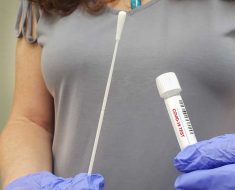Photo: Atrium Health Wake Forest Baptist
There’s nothing about a person’s day that doesn’t have an impact on their weight – and that’s why the team at the Weight Management Center at Atrium Health Wake Forest Baptist needs to be able to interact and engage with patients as much as possible.
The evidence from the organization’s classic behavioral interventions shows that the more often staff engage patients, the better the patients do.
THE PROBLEM
“Previously, we were using an app that was built primarily as a weight management intervention,” said Dr. Jamy Ard, co-director at the Weight Management Center at Atrium Health Wake Forest Baptist. “The main challenge we faced was with the user experience and engagement.
“Most people don’t wake up every day and look forward to journaling their food intake or tracking their physical activity,” he continued. “We realized we needed a patient engagement tool that could also support our weight management needs. We wanted to provide an app that patients liked to use as a part of their weight management experience.”
The goal was to bring more value to the patient and improve the quality of care through virtual care and remote monitoring. Staff wanted to encourage people to use the app because it would create the opportunity for staff to engage them between visits – and allow staff to be better prepared for visits.
“In healthcare, there is such a focus on seeing patients in the office, but we’ve learned we can provide better patient experiences by engaging patients outside of the office in a way that isn’t captured by an appointment.”
Dr. Jamy Ard, Atrium Health Wake Forest Baptist
“We were looking for an app that was useful, easy to navigate, and that captured the data we were looking for through connected devices, such as weight scales, nutrition tracking, surveys and journaling,” Ard explained. “The No. 1 reason people join our weight management program is for accountability. If we have a tool people will not use, it’s hard for us to provide that accountability.”
PROPOSAL
Ultimately, the overall strategy was to be able to use an app to create a portal of entry into the weight management program.
“First and foremost, we wanted to improve the user experience,” Ard said. “We also wanted to have a more robust remote patient monitoring interface and application that made it easy to set up multiple devices. Lastly, we wanted to have reliability in terms of connecting devices to the app and the ability to expand the device sets in the future.”
That’s when the healthcare provider organization decided on an app from health IT vendor Carium.
MEETING THE CHALLENGE
Even before someone becomes a new patient, they are introduced to Carium and given a chance to explore and understand that it will be a part of their patient experience.
“When they come into the clinic, they already have an orientation to the app and it’s positioned as a tool to help them with self-monitoring that allows their care team to provide feedback in between clinic visits and be better prepared for their clinic visit,” Ard explained.
“The tech is configured to support patients on their weight loss journey with educational materials and informative interactions with their care team,” he continued. “With the app, patients log food intake, connect scales to track weight and connect consumer wearables to track their activity. This combined data set provides our team a rich view of a patient’s health – in real time and longitudinally – and enables frequent engagement, tailored feedback and targeted treatment.”
At the population level, the care team can effectively monitor patients and proactively intervene when needed. The technology complements and augments the care team’s ability to provide personalized care at scale through dashboards and automation.
RESULTS
Ninety-four percent of patients in the weight management program agree the app was helpful in their weight loss journey, according to studies conducted by Atrium Health Wake Forest Baptist.
“Carium doesn’t feel like a weight management app; it feels like an app to help patients on their health journey, and our patients find that refreshing,” Ard noted. “They have the ability to increase focus on weight or to change the focus to nutrition, fitness or sense of well-being.
“We’re also seeing a 91% patient engagement rate with the app,” he continued. “Our goal was to improve the user experience, and these results prove our success. The technology helps us help them, and it’s flexible, intuitive and easy to use.”
Although people do not look forward to journaling their food intake or tracking their physical activity, when they begin to see the value of these actions, they stay engaged and appreciate the accountability it offers, he added.
“We first started using Carium in our medical weight loss program and have since expanded it into our surgical program,” he said. “It is an ongoing development process as we continue to develop new ways to use the tool and further integrate it into our workflows.”
ADVICE FOR OTHERS
The weight management program already was moving along this path when the pandemic hit, so even though patients’ clinic visits transitioned to virtual modes, staff were able to continue to engage patients in a way that was meaningful, Ard said. That offered continuity of care for patients, and it did not feel like staff were just throwing something together, he added.
“In healthcare, there is such a focus on seeing patients in the office, but we’ve learned we can provide better patient experiences by engaging patients outside of the office in a way that isn’t captured by an appointment,” Ard advised. “If we are successful in bringing value to patients and improving their health, then we should be reimbursed for providing care that way. This is what value-based care enables that typical fee-for-service does not.”
When thinking about implementing remote monitoring and virtual care technology, engage stakeholders in the technology early to determine how to transform and rethink how the organization can deliver care using this type of strategy, he said.
“It’s also crucial to think about patient engagement as being more than giving patients a tool and hoping they use it,” he concluded. “To truly be successful with these programs, we need to change the way we deliver healthcare and be active participants.”
Twitter: @SiwickiHealthIT
Email the writer: [email protected]
Healthcare IT News is a HIMSS Media publication.
Source: Read Full Article






